Special Report
How COVID Fatality Rates Compare With Other Deadly Diseases

Published:

With the second anniversary of the pandemic nearing, we don’t need to be reminded of the deadliness of viruses. As of Jan. 22, 5.58 million deaths worldwide have been attributed to the novel coronavirus, SARS-CoV-2, which causes COVID-19. More than 864,000 of the deaths have been reported in the United States, according to data from the Johns Hopkins University of Medicine.
As deadly as the novel coronavirus has been, there are many other viruses that are lethal to humans. (COVID-19: These are the states fighting it most successfully.)
To find how COVID-19 fatality rate compares with other diseases, 24/7 Tempo reviewed several resources. The measure, case fatality rate, or CFR, uses known infections and deaths, and therefore may be an overestimate or an underestimate of the actual overall infection fatality rate. The case fatality rate listed is assuming no treatment or vaccines, which many of the diseases have.
Viruses are microscopic parasites that depend on other cells, from bacteria to plants to animals to survive. For a virus to cause infection, it attaches to the cell of the host at one of the receptor molecules on the cell surface. It then enters the host cell and proceeds to replicate and infect other host cells.
While some of the diseases on the list are caused by viruses, others are caused by bacteria. Bacteria are small single-celled organisms found almost everywhere on Earth, including within our bodies. Unlike viruses, bacteria don’t necessarily need a host cell. And while many bacteria cause no harm, some can cause diseases.
Both viruses and bacteria can spread from person to person in a similar manner, whether through direct contact or through the air. Both can also cause diseases that range from mild to severe and chronic.
Some of the diseases on the list like plague and cholera have been with us for centuries, and if left untreated, they can be fatal. Others are relatively recent scourges, such as Ebola (1976), the H1N1 flu, also known as swine flu (2009), and the avian flu (H7N9) (2013).
Many of the diseases on the list are zoonotic, meaning they are spread from animals and can be fatal if not treated. Many are specifically mosquito-borne. (Another disease transmitted by ticks is Lyme disease. (These are the worst states for Lyme disease.)
Thanks to advances in medicines over the years, many have vaccines or treatments, and fatality rates are considerably lower today than they would be otherwise. Some, however, still do not have treatment.
Click here to see how COVID fatality rates compare with other deadly diseases
To find how COVID-19 fatality rate differs from other diseases, 24/7 Tempo reviewed several resources, including the World Health Organization, the United States Army Medical Research Institute of Infectious Diseases, the Centers for Disease Control and Prevention, as well as published research papers such as the Institute of Population Health Sciences, University of Newcastle’s Comparison of COVID-19 Health Risks With Other Viral Occupational Hazards.

Varicella (chickenpox)
> Case fatality rate (untreated/unvaccinated): <0.02%
Chickenpox is an infection caused by the varicella-zoster virus, which produces an itchy rash with blisters filled with fluid. It’s very contagious to people who haven’t had the disease or been vaccinated against it. Chickenpox can spread through direct contact with the rash or if a person with the disease coughs or sneezes and you inhale the air droplets.
[in-text-ad]
H1N1 influenza (swine flu)
> Case fatality rate (untreated/unvaccinated): <1%
The H1N1 flu, also known as swine flu, is primarily caused by the (H1N1)pdm09 strain of the influenza A virus. The strain was first identified in 2009 and caused the swine flu pandemic of 2009-2010. From April 12, 2009 to April 10, 2010, the CDC estimates there were 60.8 million cases and 12,469 deaths in the U.S. It is one of several flu strains that can cause seasonal flu. The flu vaccine protects against H1N1.

Mumps encephalitis
> Case fatality rate (untreated/unvaccinated): <1%
Mumps is a condition caused by a paramyxovirus that mostly affects the saliva-producing glands near a person’s ears. Mumps can cause swelling in one or both of these glands. Mumps cases are not so common in the U.S., but when outbreaks occur, they happen near close-contact locations like college campuses. Most cases are resolved within 10 days. The mumps vaccine is part of the series of recommended childhood vaccinations in the U.S.
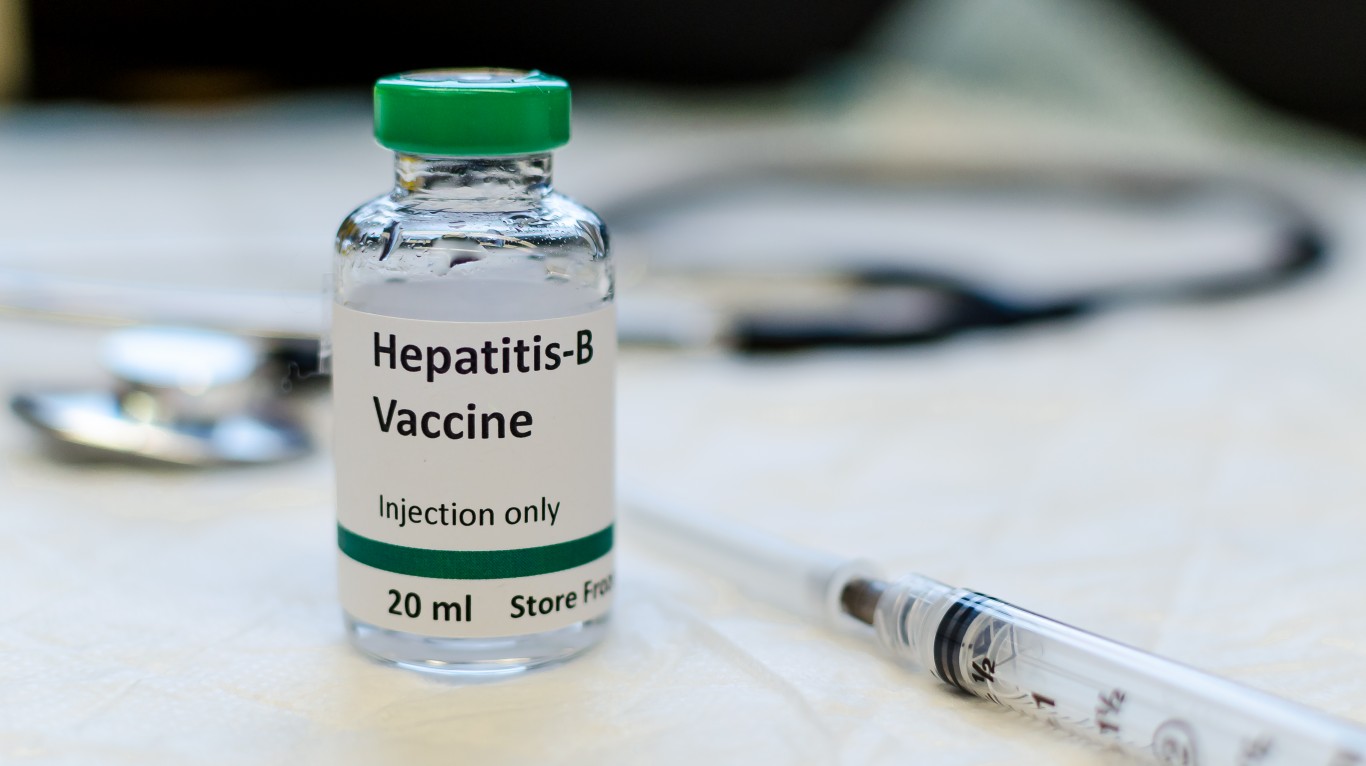
Hepatitis B
> Case fatality rate (untreated/unvaccinated): 0.1%
Hepatitis B is a contagious liver disease triggered by the hepatitis B virus. Infected persons can develop a short-term infection, experiencing a mild illness with few or no symptoms or a more serious illness requiring hospitalization. Symptoms include loss of appetite, fatigue, pain in muscles and joints, nausea and diarrhea, and vomiting.
For others, the infection becomes chronic and can lead to serious health problems, possibly even liver cancer. Hepatitis B is part of the recommended childhood immunization schedule.
[in-text-ad-2]

Hepatitis A
> Case fatality rate (untreated/unvaccinated): 0.3%-2.7%
Hepatitis A is a highly contagious liver infection caused by the hepatitis A virus. It causes inflammation and affects liver function. Symptoms include loss of appetite, fatigue, low-grade fever, pain in muscles and joints, nausea and diarrhea, and vomiting. Most people get hepatitis A from tainted water or food, so practicing proper hygiene is recommended to reduce the chances of getting hepatitis A. Vaccines are available for travelers or as part of childhood vaccinations.
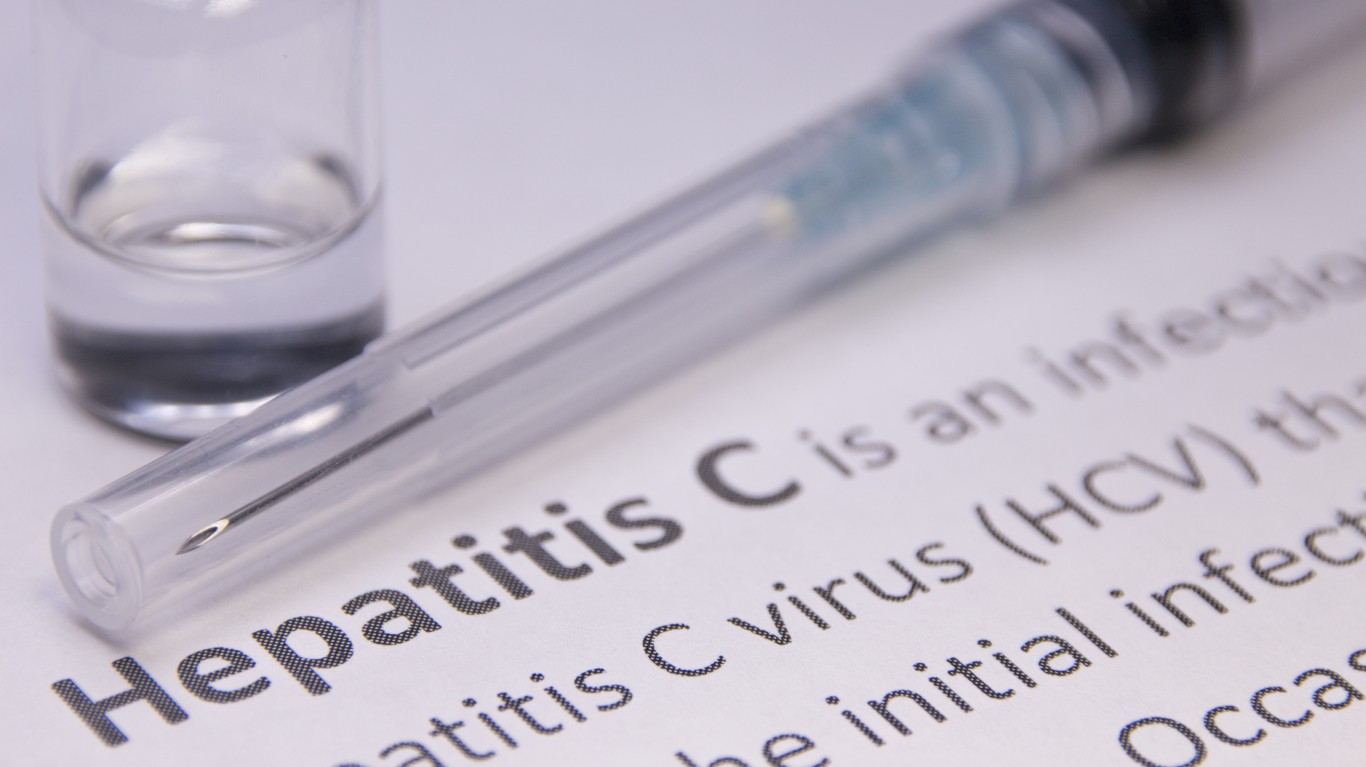
Hepatitis C
> Case fatality rate (untreated/unvaccinated): 0.3%-9.2%
Hepatitis C is a viral infection that causes liver inflammation and can sometimes lead to serious liver damage and even liver failure. It spreads through contaminated blood, therefore injected or inhaled illicit drug users are at increased risk of getting infected. Health workers are also at risk because they can become exposed to contaminated blood. The Mayo Clinic estimates about half the people who have the hepatitis C virus (HCV) don’t know they have it.
[in-text-ad]
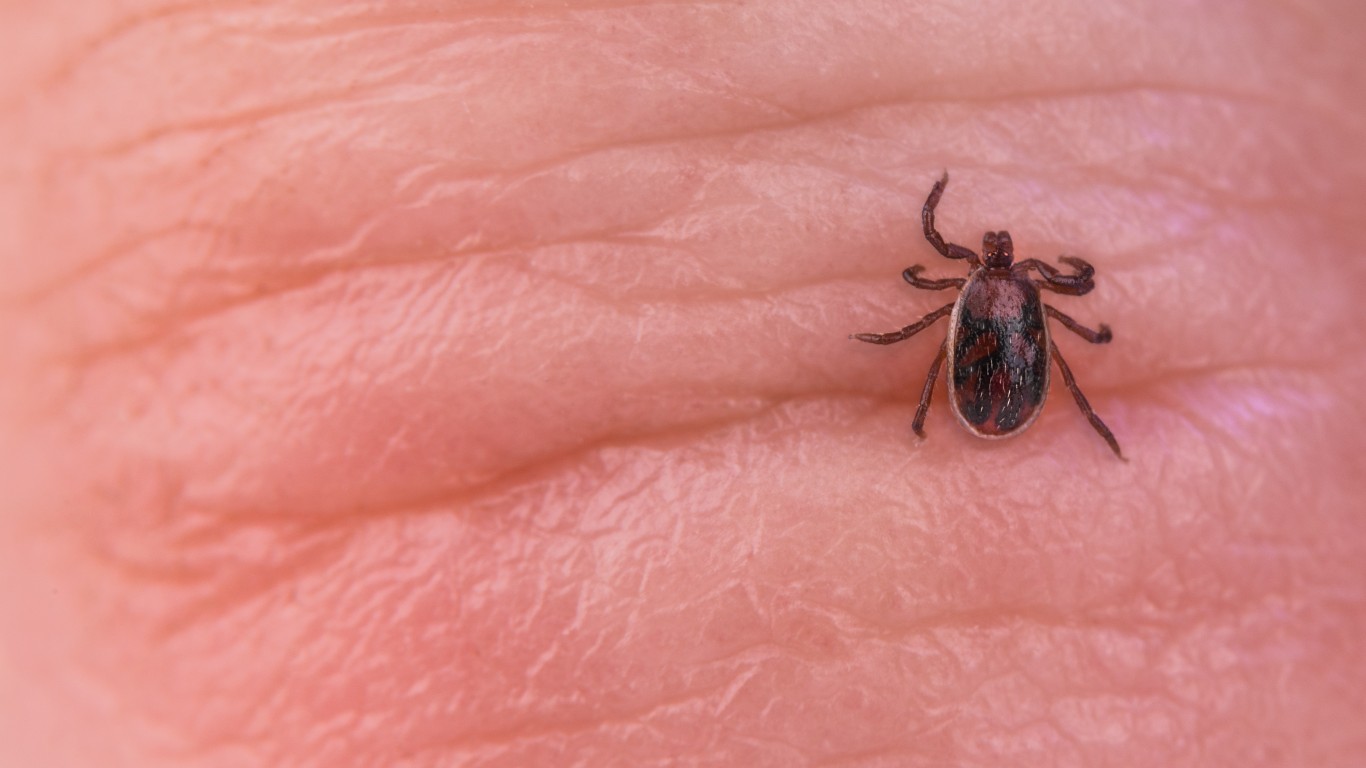
Rocky Mountain spotted fever
> Case fatality rate (untreated/unvaccinated): 0.5%
Rocky Mountain spotted fever is a bacterial disease spread through the bite of an infected tic – American and brown dog ticks and wood ticks in the United States. A rash typically appears after two to five days, and the condition can be fatal if not treated with the right antibiotic within five days of symptoms, which include high fever, headache, nausea, vomiting, altered mental condition, and difficulty breathing.
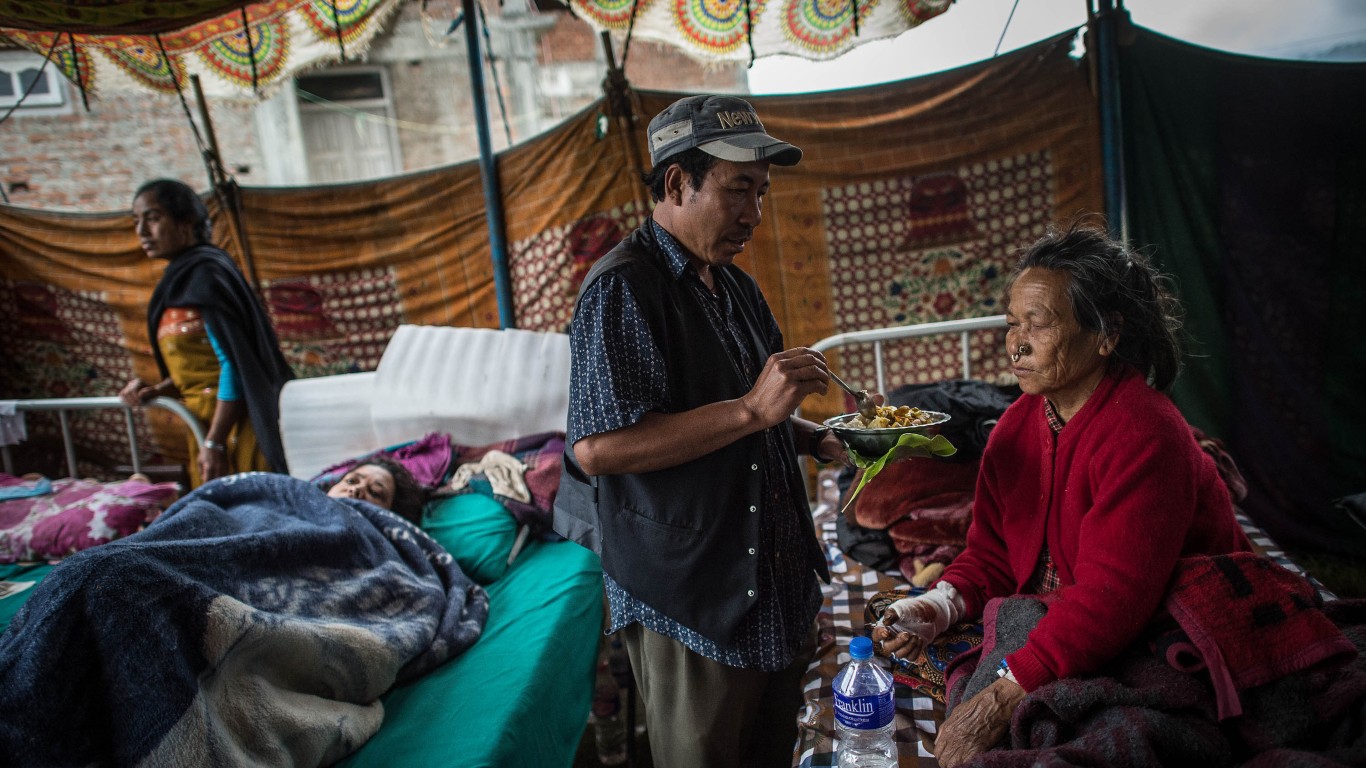
Typhoid fever
> Case fatality rate (untreated/unvaccinated): 0.9%-5.4%
Typhoid fever is caused by the bacteria Salmonella typhi and is rare in developing nations. It can be transmitted via feces or oral transmission. People living in developing countries where typhoid fever is more common, may become infected by drinking contaminated water.
Typhoid fever can be fatal without appropriate antibiotic treatment. Vaccines are available and are recommended for people travelling to places where it is more common. An outbreak of a drug-resistant typhoid fever has been ongoing in Pakistan.

Lassa fever
> Case fatality rate (untreated/unvaccinated): 1%
Lassa fever is one of a category of viral hemorrhagic fevers that are spread by contact with infected animals or insects, such as mosquitoes, ticks, rodents, or bats. It is endemic in parts of West Africa. It was discovered in 1969 and named after a Nigerian village where the first cases occurred. According to the CDC, an estimated 100,000 to 300,000 infections occur annually, with approximately 5,000 deaths. An antiviral drug is used to treat patients.
[in-text-ad-2]
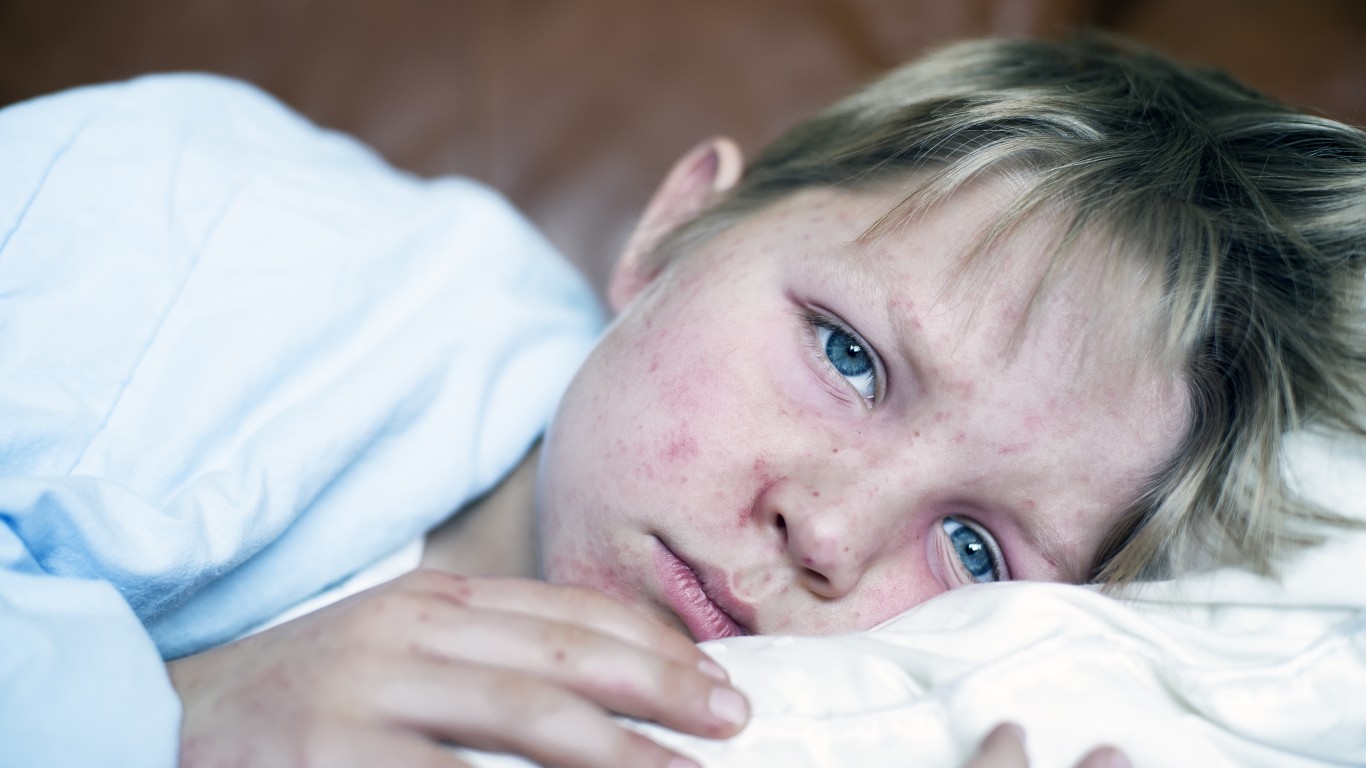
Measles
> Case fatality rate (untreated/unvaccinated): 1%-15%
Measles is a highly contagious virus that often infects children. Its symptoms include fever, dry cough, running nose and sore throat. The measles vaccine is part of the childhood immunization schedule and with increased vaccinations deaths have declined worldwide. Still, It is estimated to kill about 100,000 people worldwide, most of them under 5 years old.
According to the CDC, about 1 in 5 unvaccinated people in the U.S. who get measles are hospitalized. (The high variation in case fatality rates relates to how developed a country is.)
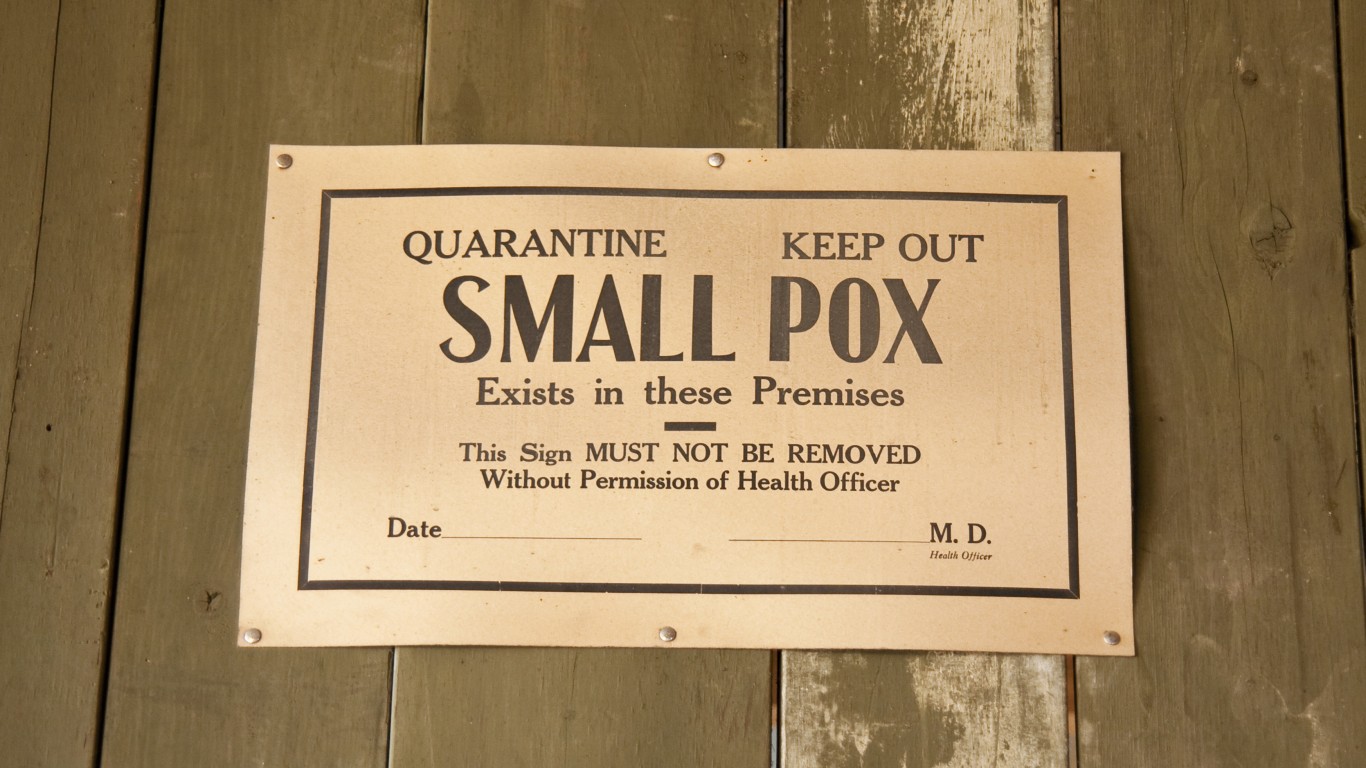
Smallpox (different strains of variola virus)
> Case fatality rate (untreated/unvaccinated): 1%-95%
Smallpox is a contagious and often deadly disease that has been around for at least 3,000 years. With no cure or treatment for smallpox, a global immunization initiative began in 1967, and in 1980, the WHO declared smallpox eradicated. Smallpox is caused by the variola virus and can produce red spots that turn into lesions that in turn become blisters.
Depending on the type, case fatality rates can differ, but on average three out of every 10 people who got it died, according to the CDC. Today, stocks of the variola virus officially exist only in two labs worldwide, one the U.S. and one in Russia.
[in-text-ad]
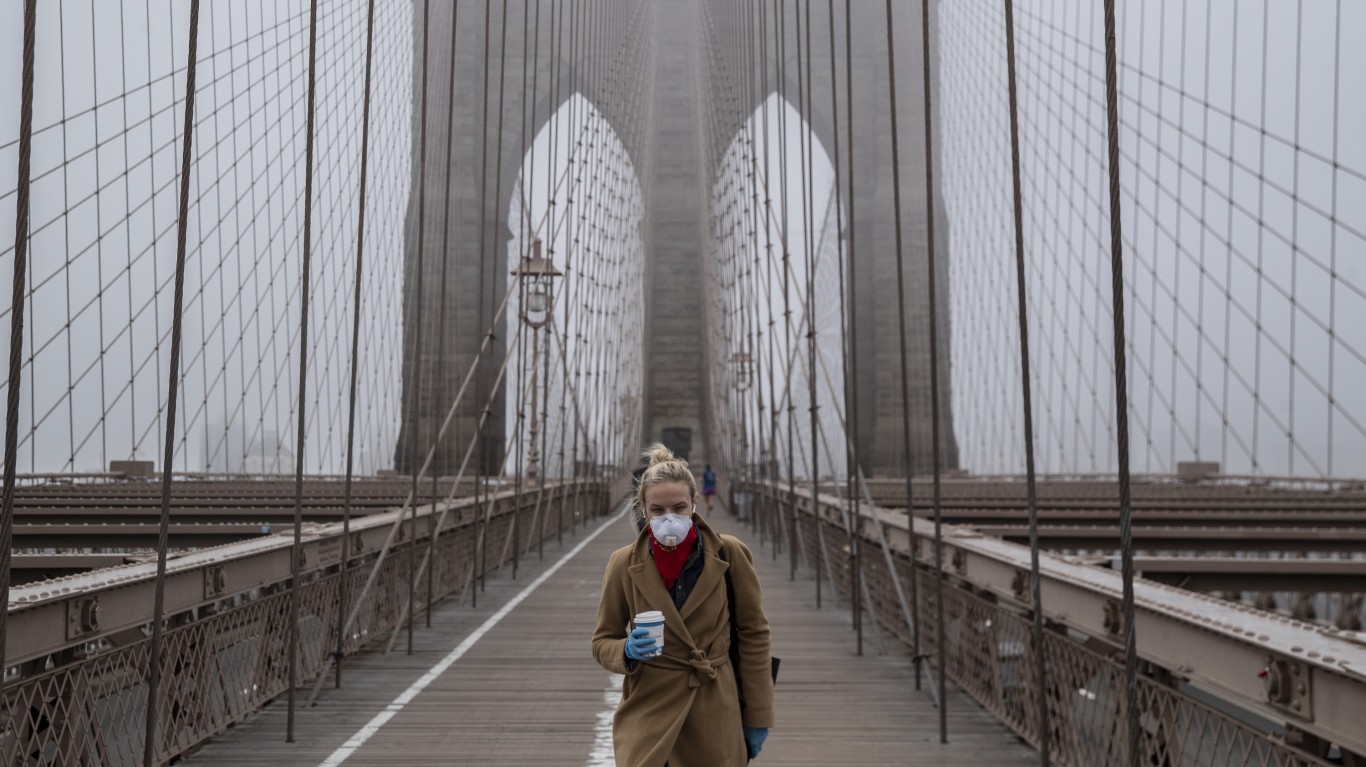
Coronavirus disease 2019 (COVID-19)
> Case fatality rate (untreated/unvaccinated): 3.4%
Coronaviruses are a group of viruses that can cause illnesses ranging from the common cold to severe disease. A new coronavirus was identified in 2019, following an outbreak in China.
In March 2020, the WHO declared the COVID-19 outbreak a pandemic. As of Jan. 22, 5.58 million deaths worldwide have been attributed to the coronavirus, with more than 864,000 in the United States.
While with vaccines the case fatality rate has declined significantly, the WHO estimated the CFR at 3.4% in the early days of the pandemic. CFR also differs greatly between age groups with people older than 60 most at risk.
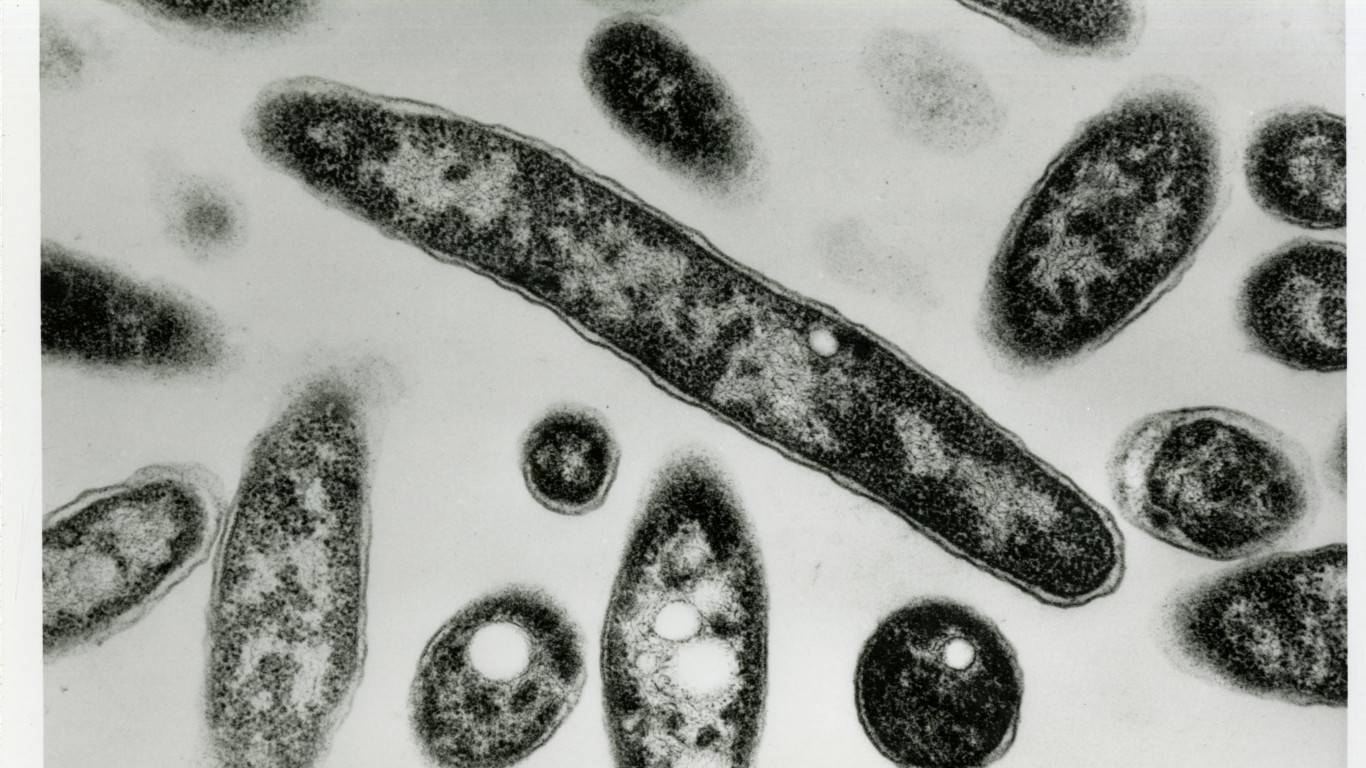
Legionnaires’ disease
> Case fatality rate (untreated/unvaccinated): 10%
The bacterium legionella causes Legionnaires’ disease, which is a version of pneumonia. Most people contract the disease by inhaling the bacteria from water or soil. Those most vulnerable are older adults, smokers, and those with weakened immune systems. Legionnaires’ disease is treated with antibiotics, and though most cases can be treated successfully, about one in 10 will die due to complications from their illness.

Severe acute respiratory syndrome (SARS)
> Case fatality rate (untreated/unvaccinated): 11%
Severe acute respiratory syndrome (SARS) is a contagious viral respiratory illness caused by a coronavirus called SARS-associated coronavirus (SARS-CoV). SARS first appeared in China in November 2002, and was reported in February 2003. Within a few months, SARS spread worldwide, but no cases have been reported since 2004.
A total of 8,098 people worldwide became sick with SARS during the 2003 outbreak (Nov. 1, 2002, July 31, 2003), 774 of whom died. The WHO estimates a 3% fatality rate.
[in-text-ad-2]
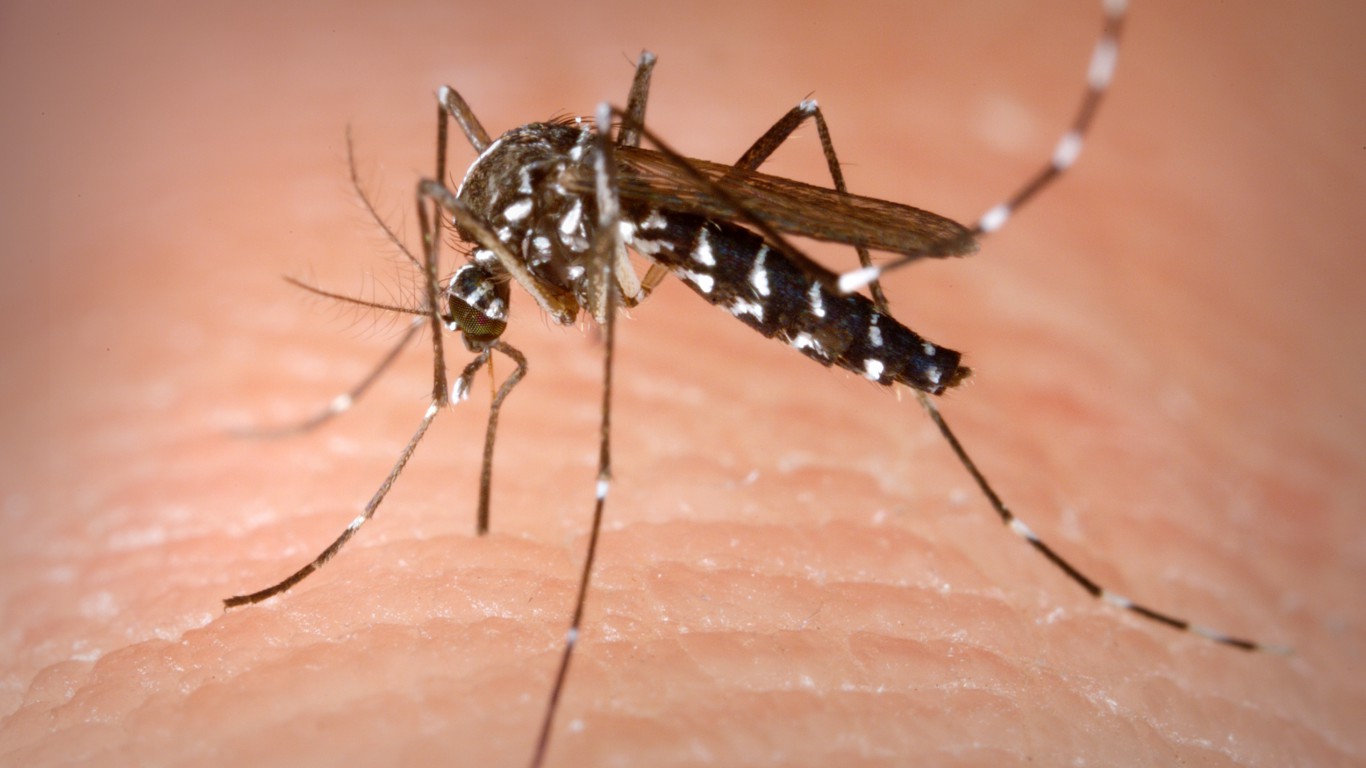
West Nile virus
> Case fatality rate (untreated/unvaccinated): 4%-14%
The leading cause of mosquito-borne disease in the continental United States is West Nile virus. It is usually spread by those bitten by an infected mosquito. About one in five people develop a fever or have symptoms like headache or fatigue. There are currently no vaccines to prevent West Nile or medications to treat it.There are currently no vaccines to prevent West Nile or medications to treat it. Though the CDC estimates that about one out of 150 infected people will develop a serious, sometimes fatal, illness, fatality rates can be higher in different regions and depending on the age.
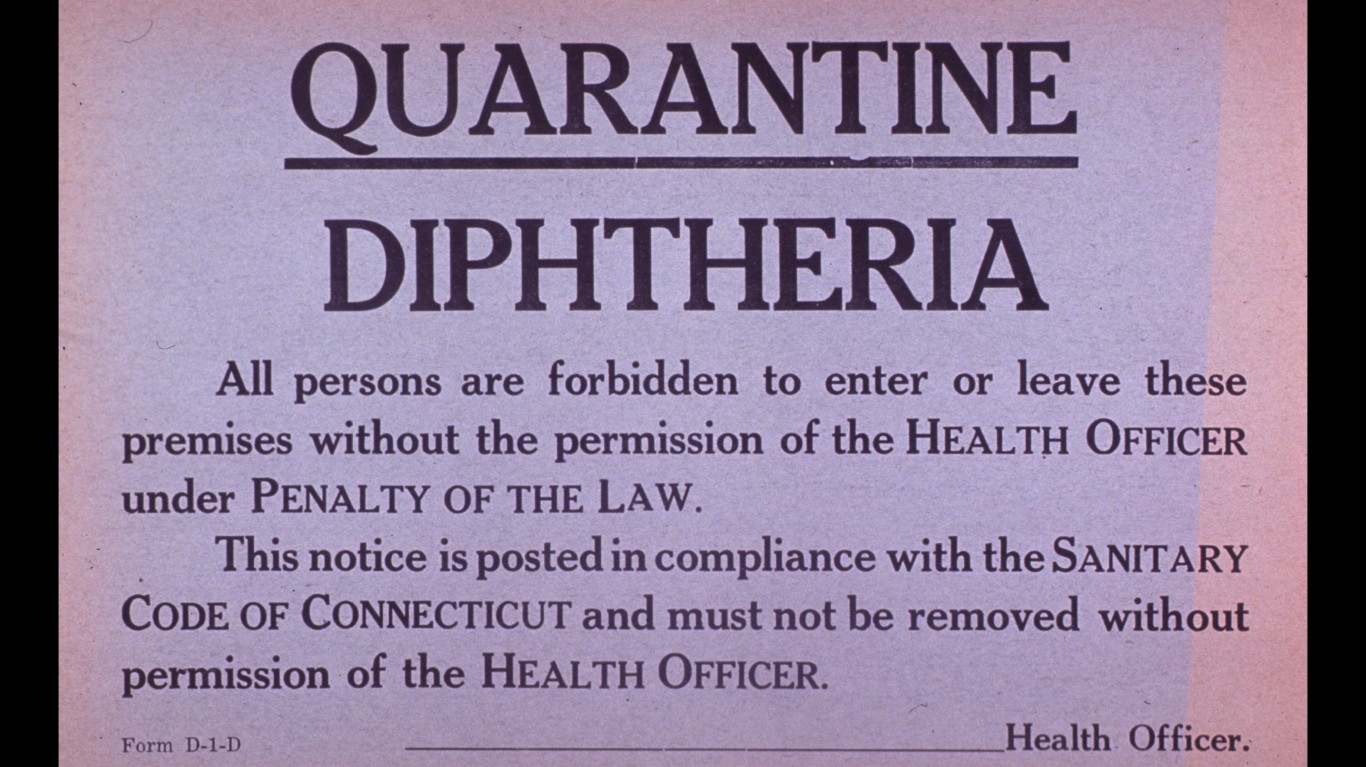
Diphtheria
> Case fatality rate (untreated/unvaccinated): 5%-20%
Diphtheria is a bacterial infection that usually attacks the mucous membranes of the nose and throat. Widespread vaccination has made it rare in the U.S. and other developed countries. The vaccine is part of the recommended childhood immunization schedule. Developing nations still have high rates of diphtheria. The condition can be treated, but in advanced stages it can damage the heart, kidneys, and nervous system. Even with treatment, diphtheria can be deadly, especially in children.
[in-text-ad]
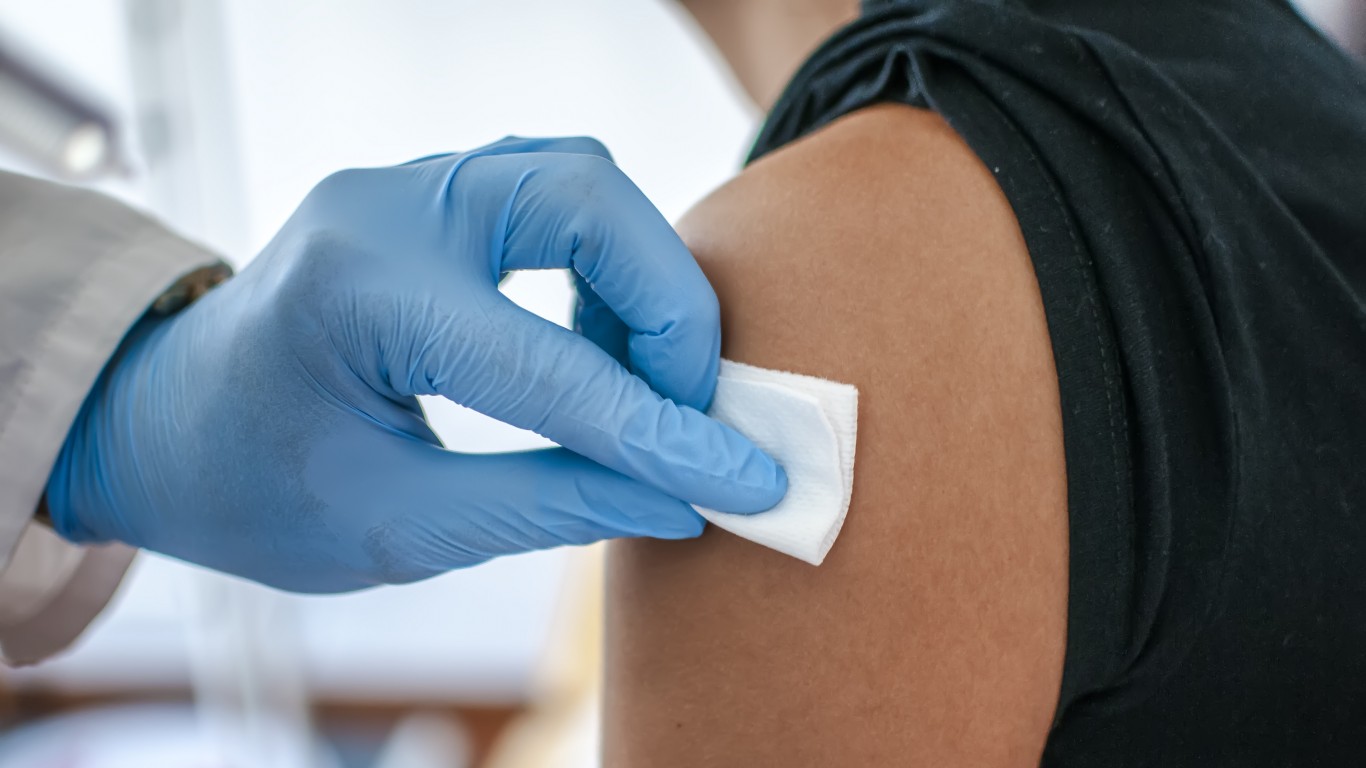
Meningococcal disease
> Case fatality rate (untreated/unvaccinated): 10%-20%
Meningococcal disease refers to an illness caused by the Neisseria meningitidis bacteria, also known as meningococcus. These illnesses can be deadly and can include infections of the lining of the brain and spinal cord as well as bloodstream infections. These bacteria spread through spit or kissing.
Meningococcal disease is treated with antibiotics and must be treated quickly. The CDC recommends meningococcal vaccines to preteens, teens, and certain other people.
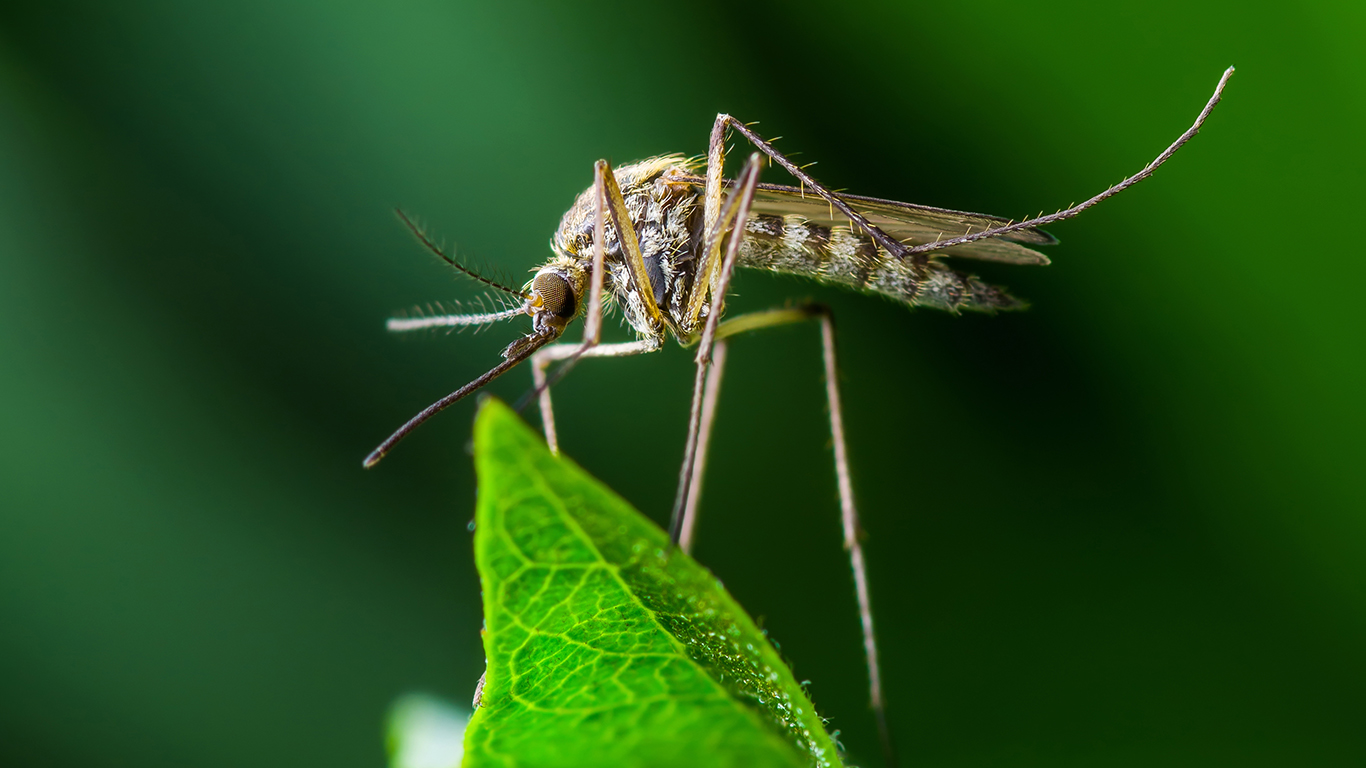
Yellow fever
> Case fatality rate (untreated/unvaccinated): 3%-50%
Yellow fever is found in tropical and subtropical environs of Africa and South America and is spread by the bite of an infected mosquito. Yellow fever was a big reason why the French abandoned plans to build the Panama Canal in the 19th century. The disease ranges from a fever with aches and pains to severe liver disease with bleeding and yellowing skin.
There is no treatment or cure. There is a vaccine, however, that is recommended for travelers to regions with yellow fever.

Poliomyelitis (polio)
> Case fatality rate (untreated/unvaccinated): 2%-30%
Poliomyelitis is a viral disease that can affect nerves and can lead to partial or full paralysis. It is caused by infection with the poliovirus and can be spread by person-to-person contact through mucus or phlegm from the nose or mouth, or by contact with infected feces.
The development of the polio vaccine had drastically reduced the incidence of poliomyelitis. The high range in fatality rate depends on the form of the disease. In fact, the case fatality rate increases to 75% when some parts of the body are involved.
[in-text-ad-2]

Anthrax Several kinds
> Case fatality rate (untreated/unvaccinated): 10%-50%
Anthrax is an illness caused by the spore-forming bacterium Bacillus anthracis. It mainly affects livestock and wild game. People can become infected through direct or indirect contact with sick animals. It can enter the body through a wound, by eating contaminated meat, or by inhaling the spores.
While anthrax is rare in developed nations, it is considered to be a bioterrorism threat. Treatment includes antibiotics and antitoxins. Depending on the type, fatality can be lower or higher.
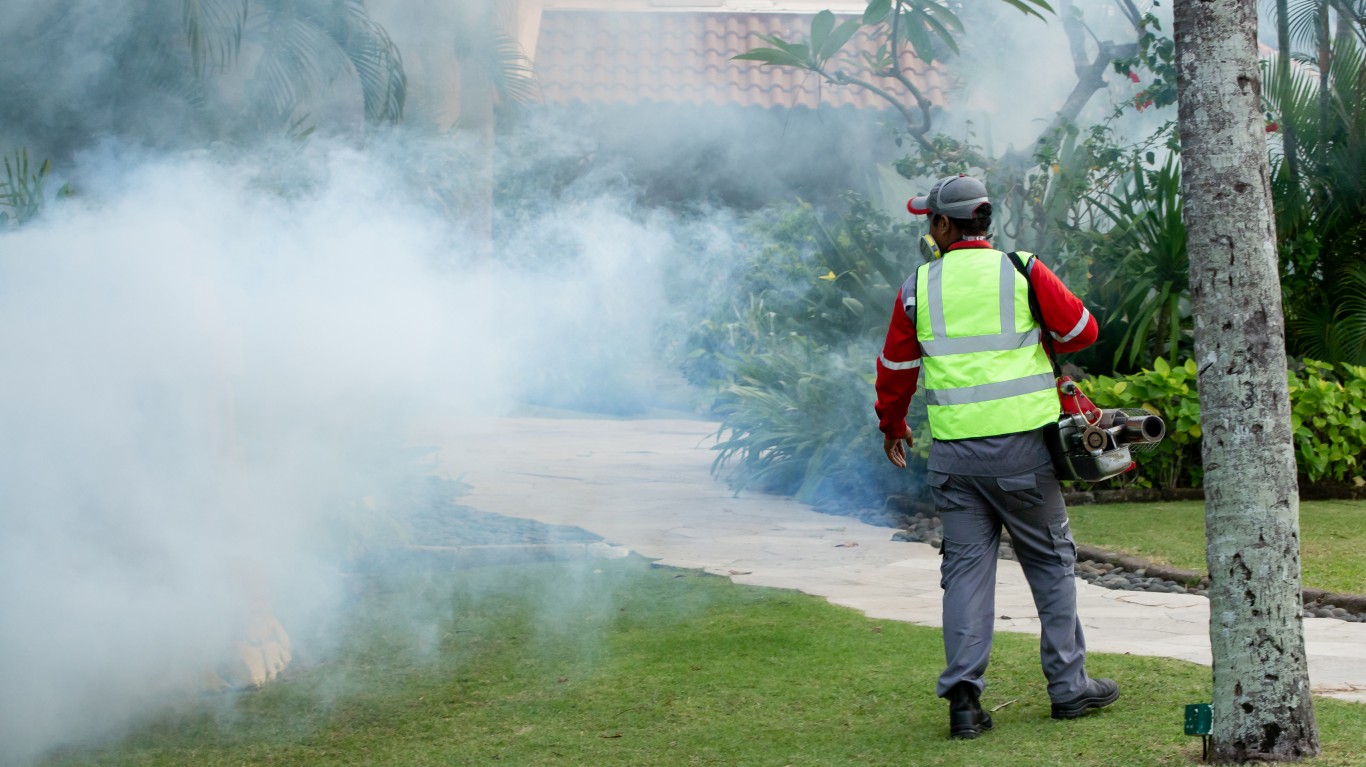
Dengue haemorrhagic fever
> Case fatality rate (untreated/unvaccinated): 20%
Dengue haemorrhagic fever is a viral infection transmitted to humans through mosquito bites. It occurs in tropical and subtropical regions, most commonly in Southeast Asia, the western Pacific islands, Latin America, and Africa. Mild dengue fever causes a high fever and flu-like symptoms, while the severe form can lead to serious bleeding, a sudden drop in blood pressure, and death.
There is no specific treatment for dengue, but early detection and access to proper medical care lowers fatality rates of severe dengue to below 1%, according to the WHO.
[in-text-ad]

Asian lineage avian influenza A (H7N9)
> Case fatality rate (untreated/unvaccinated): 20%-40%
Asian lineage avian influenza A (H7N9) is the North American strain of virus that is circulated by wild birds. It also is known as bird flu. It was first detected in China in 2013.

Japanese encephalitis
> Case fatality rate (untreated/unvaccinated): <30%
Japanese encephalitis is caused by a virus spread by infected mosquitoes in Asia and the western Pacific. It’s one of several mosquito-transmitted viruses that can cause brain inflammation. Most people infected with JE have no symptoms or mild ones. However, a small percentage of infected people develop inflammation of the brain, with symptoms including high fever, coma, tremors, and convulsions. About one in four cases are fatal, according to the CDC.
There is no specific treatment, but a vaccine is recommended to people travelling to places where JE is endemic.

Middle East respiratory syndrome coronavirus (MERS-CoV)
> Case fatality rate (untreated/unvaccinated): 34%
Middle East respiratory syndrome is a viral respiratory disease caused by a novel coronavirus, first identified in Saudi Arabia in 2012. MERS symptoms range from from no symptoms to mild respiratory symptoms to severe acute respiratory disease and death. The WHO estimates 35% of patients with the disease have died.
[in-text-ad-2]

Tularemia (rabbit fever)
> Case fatality rate (untreated/unvaccinated): 30%-60%
Tularemia, also known as rabbit fever, is a rare infectious disease that attacks the skin, eyes, lymph nodes, and lungs. It is caused by the bacterium Francisella tularensis. It mostly afflicts rabbits, hares, and rodents, but can also infect birds, sheep, and domestic animals such as dogs, cats, and hamsters. It is spread to humans through insect bites and exposure to an infected animal.
Different forms of tularemia may have different symptoms. Though the disease can be difficult to diagnose, it can be effectively treated with specific antibiotics.

Plague (pneumonic, septicemic, bubonic)
> Case fatality rate (untreated/unvaccinated): 30%-100%
Plague, called the Black Death in medieval times, is a bacterial infection that’s transmitted primarily by fleas. The bacteria, Yersinia pestis, exist in rodents found most commonly in rural and semi-rural areas of Africa, Asia, and the United States. The organism is transmitted to humans bitten by fleas that have fed on infected rodents.
Plague infects less than 5,000 people a year worldwide. The disease is treated in hospital settings with powerful antibiotics, and depending on the type has different case fatality rates, with pneumonic always fatal when left untreated, according to WHO.
[in-text-ad]

Tetanus
> Case fatality rate (untreated/unvaccinated): 50%
Tetanus is a disease caused by a toxin-producing bacterium that attacks the nervous system and causes muscle contractions, particularly in the jaw and neck muscles. The condition is also known as lockjaw. There is no cure for tetanus, and complications can be life-threatening. Because of the widespread use of vaccines, tetanus is rare in the U.S. The CDC recommends the tetanus vaccine for people of all ages.

Ebola virus disease
> Case fatality rate (untreated/unvaccinated): 25% to 90%
The Ebola virus remains a scourge in Africa. It affects people and nonhuman primates such as gorillas and monkeys. It was first reported in 1976 near the Ebola River in the Democratic Republic of Congo. Scientists do not know where it comes from, though they believe it is borne by animals. The virus is transmitted to people through direct contact with the blood, body fluids, and tissues of animals.
Though the average case fatality rate for Ebola is 50%, the range is wider depending on the virus species. The U.S. Food and Drug Administration approved the first Ebola vaccine on Dec. 19, 2019. Two monoclonal antibodies have also been approved in late 2020 as treatments.
Cholera
> Case fatality rate (untreated/unvaccinated): 54%-68%
Cholera is a diarrheal illness that infects the intestine with the toxigenic bacterium Vibrio cholerae. It is found in water or in foods that have been contaminated by feces. About 95,000 deaths occur each year around the world. Symptoms such as watery diarrhea and vomiting can be severe and lead to dehydration and shock.
Without treatment, death can occur within hours. However, cholera can be simply and successfully treated by immediately replacing fluid and salts lost through diarrhea. In addition, antibiotic treatment is given, and zinc in children. Having clean water helps prevent cholera.
[in-text-ad-2]

Influenza A virus subtype H5N1 (bird flu, avian flu)
> Case fatality rate (untreated/unvaccinated): >60%
The highly pathogenic Asian avian influenza A (H5N1) – Asian HPAI H5N1 – virus infects the respiratory tract of people and causes serious illnesses such as pneumonia, respiratory failure, and even death. Though human infections are rare, the CDC reports that about 60% of the cases have died. Mortality has been highest in those from 10 to 19 years old and in young adults. The best prevention is to avoid exposure, while treatment may consist of some antivirals.

Botulism
> Case fatality rate (untreated/unvaccinated): 60%
Botulism is caused by toxins from the bacteria Clostridium botulinum. There are three different kinds of botulism: foodborne, wound, and infant. All kinds are potentially fatal. Treatments differ depending on the kind and might include clearing the digestive system, surgically removing affected tissue, antitoxin, and antibiotics.
[in-text-ad]

Bacterial meningitis
> Case fatality rate (untreated/unvaccinated): 70%
Meningitis is an inflammation of the fluid and membranes around the brain and spinal cord.
The swelling produces symptoms such as headache, fever, and a stiff neck. In the U.S., there are several kinds of bacteria that can cause meningitis, and treatment often includes intravenous antibiotics and sometimes corticosteroids.
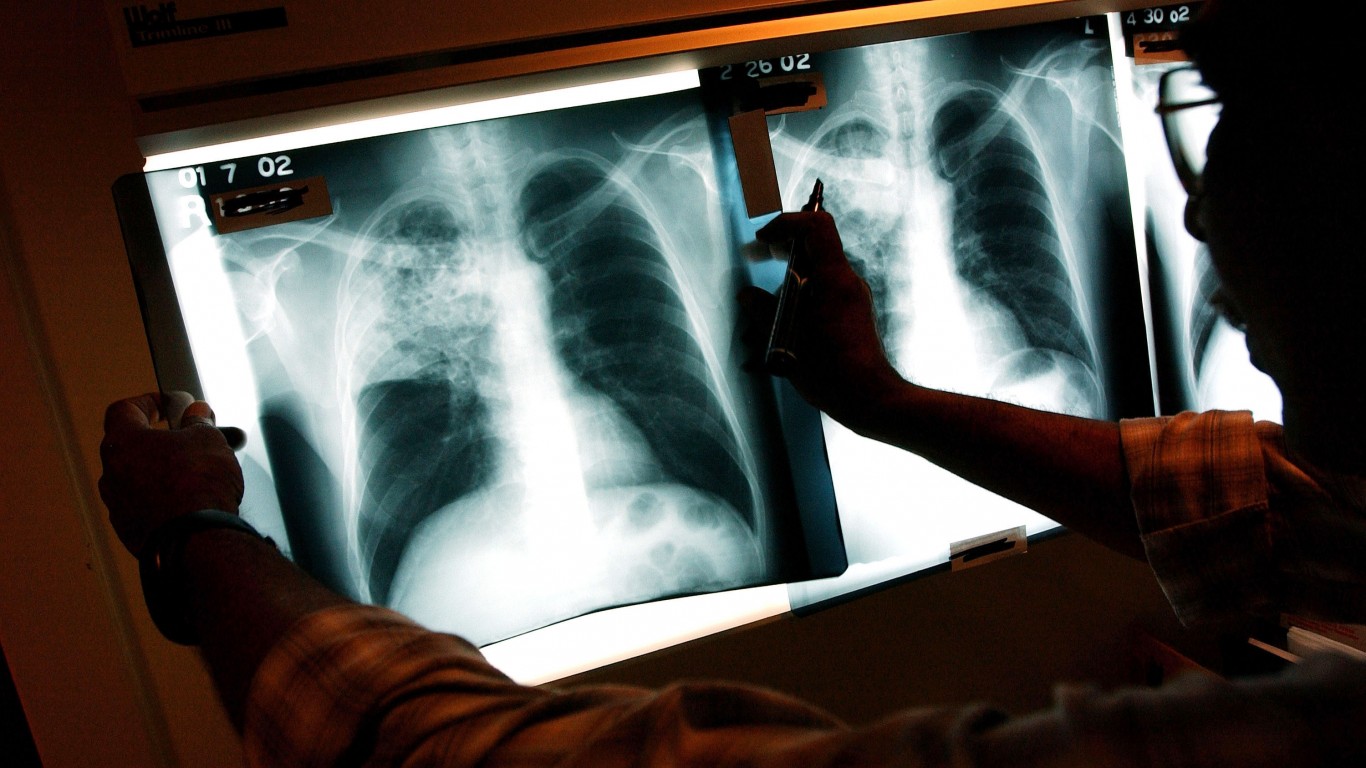
Tuberculosis
> Case fatality rate (untreated/unvaccinated): 70%
Tuberculosis, or TB, is an infectious disease that mainly attacks the lungs. The bacteria that cause TB can spread through droplets in the air expelled by coughing or sneezing. TB had been in decline until the mid-1980s but began increasing again with the rise of HIV, which weakens the immune system so it can’t fight TB. Infections have been in decline since the early 1990s, however. TB is treated with antibiotics.

Glanders
> Case fatality rate (untreated/unvaccinated): 90%
Glanders is an infectious disease caused by the bacterium Burkholderia mallei. It mostly affects horses, but it can be transmitted to people through wounds and abrasions. Because it is rare, not much is known about antibiotic treatment in humans. However, in the past, the bacteria that causes Glanders, Burkholderia mallei, have been used as a biological weapon during war.
[in-text-ad-2]
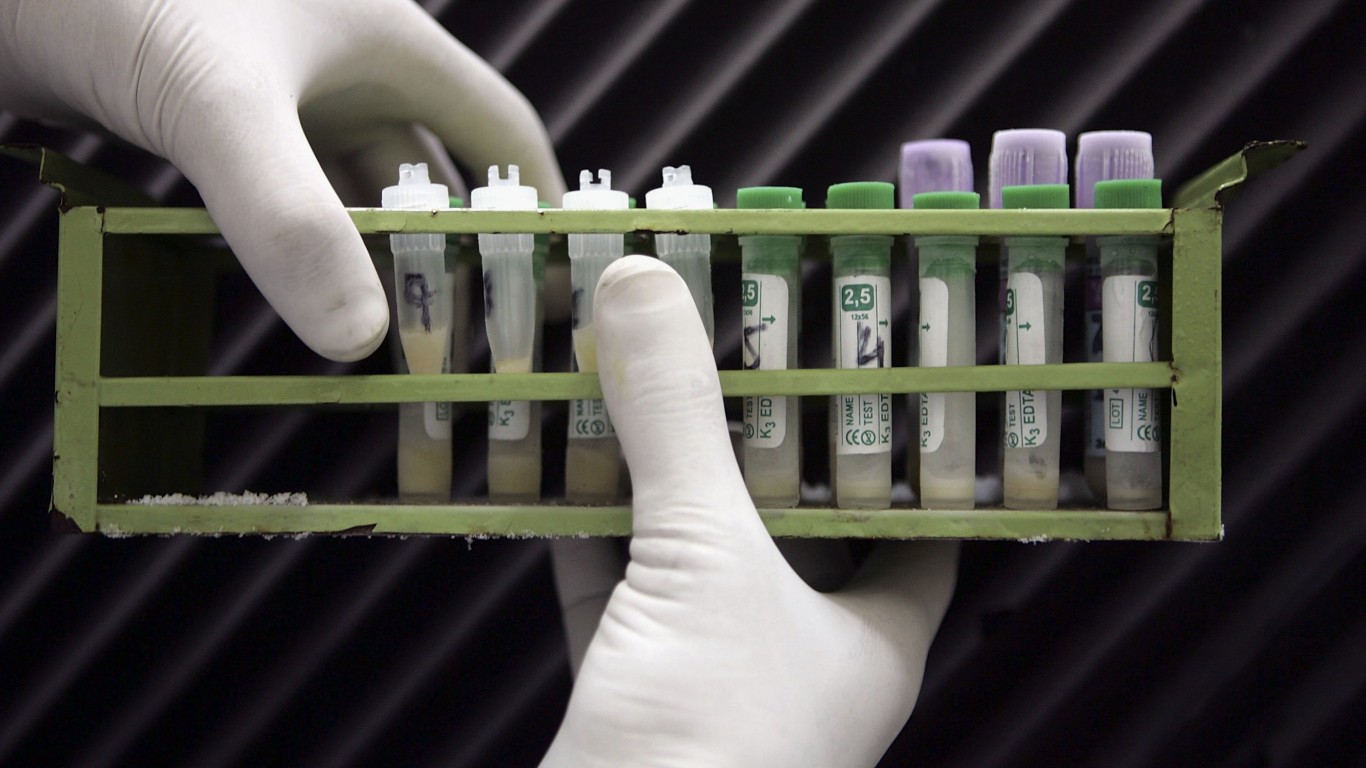
HIV/AIDS
> Case fatality rate (untreated/unvaccinated): >95%
AIDS, which stands for acquired immunodeficiency syndrome, is a life-threatening disease caused by HIV – the human immunodeficiency virus. If not treated, HIV damages the immune system, interfering with the body’s ability to fight infection and disease. HIV is a sexually transmitted infection that was first reported in medical journals in 1981. It can also be spread by contact with infected blood. It remains a scourge in Africa.
Though there’s no cure for HIV/AIDS, medications can slow the progression of the disease, and today people with HIV who get effective HIV treatment – antiretroviral therapy – can live long, healthy lives.

Rabies
> Case fatality rate (untreated/unvaccinated): 100%
Rabies is a deadly virus that infects the central nervous system, causing disease in the brain – and death. It can spread to people from the saliva of infected animals, usually through a bite. In the U.S., people are most likely to get rabies from bats, coyotes, foxes, raccoons, and skunks, but in other countries dogs still carry rabies. Most rabies deaths around the world are caused by dog bites, according to the CDC.
When someone shows symptoms, the disease nearly always causes death. But Rabies can be treated after potential exposures before symptoms start by a series of shots.
Thank you for reading! Have some feedback for us?
Contact the 24/7 Wall St. editorial team.